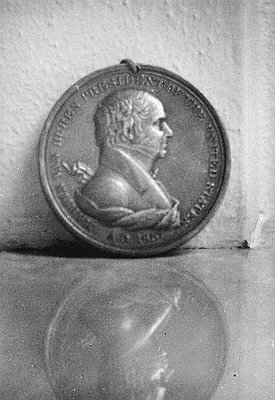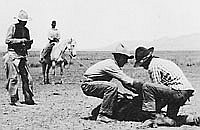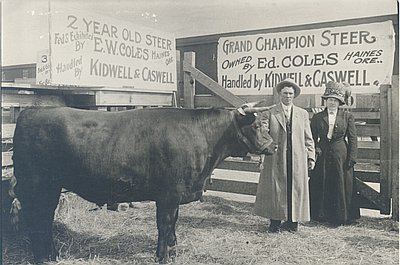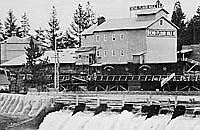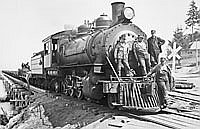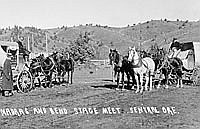The Contact Period
The late Archaic lifeways of the Indian nations encountered by Lewis and Clark during the winter of 1805–1806 already displayed signs of cultural change resulting from access to European and American trade goods. Euro-American expansion had also led to the introduction of previously unknown diseases such as smallpox and malaria. By the time the Treaty with the Tribes of Middle Oregon was signed in 1855, cultural patterns were changing dramatically. However, certain families and traditionalists no doubt continued to use their former sites during reservation times. As a testament to the resiliency of traditional cultures, some Warm Springs families still access rivers, public lands, and some private lands to continue traditional practices of hunting, fishing, and gathering plants.
The Hudson’s Bay Company (HBC) occupied Fort George—located at present-day Astoria—after its union with the North West Company in 1821. Hudson’s Bay Company trappers and traders were soon combing the country for beaver. During the winter of 1824–1825, HBC relocated their regional headquarters near the confluence of the Willamette and Columbia rivers, constructing Fort Vancouver on the northern side of the Columbia. Most accounts name Peter Skene Odgen of the HBC as the first European visitor to the upper Deschutes country, passing through in December 1825. Ogden left Fort Vancouver with a large party of trappers including French Canadians and Iroquois. Moving south along the Deschutes, Ogden’s party made contact on December 9 with another HBC group, led by Finan McDonald and Thomas McKay. The second party ascended the Willamette and crossed the Cascades to reach the rendezvous site, which may have been located on Shitike Creek, near the present-day community of Warm Springs. The combined parties passed into the Crooked River Valley, trapping beaver along the way, then left for the John Day drainage to the east on January 11, 1826. They returned to cross the Deschutes and the Cascades on their way back to Fort Vancouver that summer.
Ogden brought another party up the Deschutes in the fall of 1826. This second party met about twenty Native families camped at the site of Sherar’s Bridge, fishing at the falls. Odgen’s group tried to cross the Deschutes on fishing platforms erected over the river; however, five horses fell through. The trappers then moved east to look for beaver in the Malheur and Harney basins. Ogden and his party encountered large numbers of Native Americans in the Harney Basin, but very few in the Deschutes country.
Subsequent visitors to the inland country east of the Cascades in the 1830s included HBC men John Work and Charles Plante. American Nathaniel Wyeth ascended the Deschutes in 1834. In 1843, military explorer John Charles Frémont came through with the well-known Warm Springs guide, Billy Chinook. Frémont and his group found the Klamaths camped on Klamath Marsh. They greeted the Klamaths by firing a round from their small cannon. In 1855, another U.S. Army exploration passed through. This was the Pacific Railroad Survey, under the command of Robert S. Williamson and Henry L. Abbot.
© Ward Tonsfeldt and Paul G. Claeyssens, 2004. Updated and revised by OHP staff, 2014
Sections
Related Historical Records
Nathaniel Wyeth's expeditions to Oregon
A businessman from Cambridge, Massachusetts, Nathaniel Wyeth played an important role in the Euro American colonization of the Pacific Northwest. As a result of his efforts to establish trading operations …
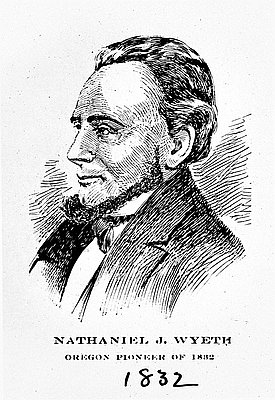
Lithograph of Fort Vancouver
This 1854 lithograph of Fort Vancouver was originally drawn by Gustavus Sohon while he and the U.S. Pacific Railroad Expedition and Survey team conducted a survey for railroad …
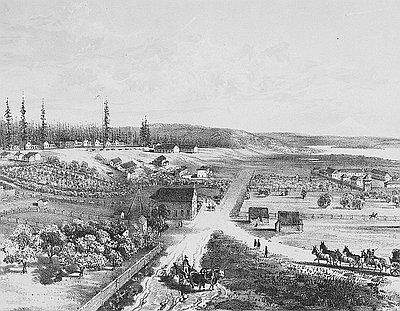
Medal Given to Billy Chinook
John C. Frémont gave this medal to Billy Chinook in recognition of his service to Frémont’s surveying expeditions. Chinook, a Wasco Indian, joined Frémont’s second expedition (1843-1844) at …
